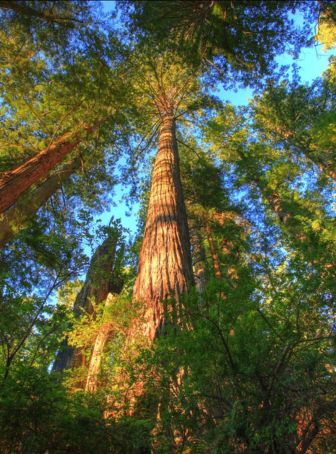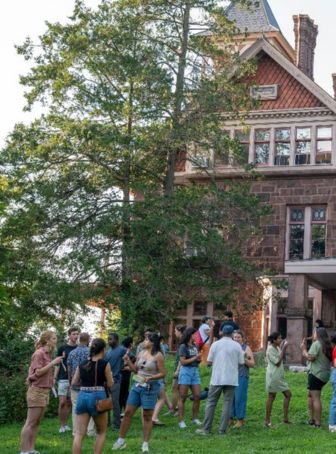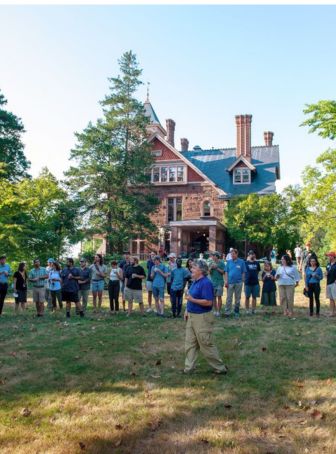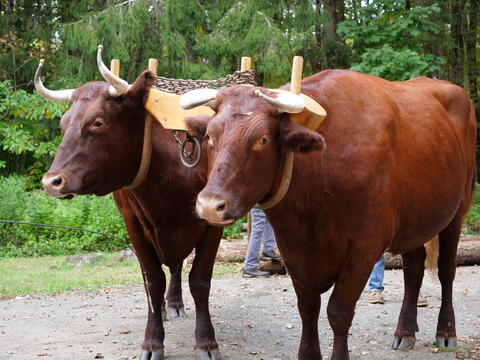
By Eli Ward ’18 MFS, PhD candidate
Anyone who has spent time in forests in southern New England has likely encountered mountain laurel. Having worked as both a horticulturist and forest ecologist, I have witnessed the full range of opinions regarding this common evergreen shrub. For gardeners and horticulturists, mountain laurel is the state flower of Connecticut, renowned for its clouds of pale pink flowers that bloom in early June. Foresters and ecologists, on the other hand, associate mountain laurel with adverse bushwhacking conditions, and forest managers often actively remove it to create growing space for trees in the understory. Though its reputation ranges from positive to negative, one thing about mountain laurel is clear: it is widespread in forest understories in the eastern U.S., where is forms dense, persistent thickets.
One aspect of mountain laurel that is less apparent is the symbiotic relationship it forms with soil microorganisms called mycorrhizal fungi. Globally, over 90% of vascular plant species affiliate with mycorrhizal fungi, and this association is characterized by a mutually beneficial trade of resources. The fungal partner provides plants with greater access to soil nutrients, such as nitrogen, and the plant provides the fungus with carbon from photosynthesis.
There are several different types of mycorrhizal fungi that mediate the exchange of carbon and nitrogen in different ways. Some types of mycorrhizal fungi actively mine soil nutrients from organic matter through decomposition, whereas others increase uptake of plant-available nutrients by functioning as an extension of the root system. Differences in the abilities of mycorrhizal fungal types to decompose organic matter can strongly influence ecosystem processes, such as soil carbon cycling and storage. This has generated immense interest in the use of mycorrhizal types to make predictions about ecological processes at broad scales.
Chantarelles (Cantharellus spp.), which are well known for their culinary uses, are an example of ectomycorrhizal fungi that form symbiotic relationships with tree species such as oaks at Yale-Myers Forest. Photo courtesy of Ward.
There are two types of mycorrhizal fungi that associate with the majority of tree species globally: (1) arbuscular mycorrhizal fungi, which scavenge inorganic nutrients, and (2) ectomycorrhizal fungi, some of which can mineralize organic nutrients. Research on the effects of mycorrhizal types on biogeochemical processes in forests has therefore focused almost exclusively on the relative abundance of these two mycorrhizal types.
However, there is an additional type of mycorrhizal fungi—ericoid mycorrhizal fungi—that forms associations with some shrubs in the family Ericaceae, including mountain laurel. Research has shown that some species of ericoid mycorrhizal fungi have higher decomposing abilities than ectomycorrhizal fungi and could therefore have a more pronounced effect on carbon and nitrogen cycling.
Yet despite the fact that mountain laurel and other ericoid mycorrhizal shrubs (e.g. blueberries, rhododendron) can be very common in temperate forests, they have rarely been considered in studies linking plant mycorrhizal types to ecological processes. One potential reason for this knowledge gap is that shrubs are less often surveyed in forests than trees and, as such, less data is available on the abundance of ericoid mycorrhizal plants compared to arbuscular versus ectomycorrhizal trees.
As part of my dissertation research, I led a study published in Journal of Ecology that investigates the effects of ericoid mycorrhizal shrubs on soil carbon and nitrogen in temperate forests in the eastern U.S. This paper was a collaboration with my dissertation committee, which includes Dr. Mark Bradford and Dr. Marlyse Duguid—two faculty at The Forest School at YSE whose research focuses on soil carbon dynamics and understory plant communities in forests, respectively.
Eli Ward collects soil samples within a cluster of mountain laurel shrubs in Yale-Myers Forest. Photo courtesy of Ward.
In the paper, we used data collected from U.S. National Parks and National Forests to assess the abundance, frequency, and species richness of ericoid mycorrhizal plants in temperate forests in the eastern U.S. We then used soil and vegetation data collected from 420 forest plots at Yale-Myers Forest to analyze the relationship between ericoid mycorrhizal shrubs and soil carbon and nitrogen.
We found that in the absence of ericoid mycorrhizal shrubs, such as mountain laurel, the effects of arbuscular versus ectomycorrhizal trees on soil carbon and nitrogen were small to negligible. Yet ericoid mycorrhizal shrubs had a strong, positive influence on soil carbon and nitrogen and were associated with a build-up of organic matter. These findings are important because they indicate that ericoid mycorrhizal shrubs have the potential to confound the effects of arbuscular versus ectomycorrhizal trees in studies that do not account for their presence. As such, further consideration of the effects of ericoid mycorrhizal shrubs appears to be warranted.
Mountain laurel shrubs cover the understory, preventing tree regeneration in this area of the forest. Photo courtesy of Ward.
Research has long shown that mountain laurel can act as an ecological filter by inhibiting tree growth and regeneration. Our study indicates that the ecological effects of this common species extend belowground by, for instance, influencing
the amount and form of carbon stored in the soil. These processes are interrelated and could therefore inform forest management efforts.
One way that ericoid mycorrhizal shrubs influence soil organic matter is through their leaf chemistry, which includes compounds that bind with soil nitrogen, making it inaccessible to other plants (Wurzburger and Hendrick 2009). Ericoid mycorrhizal fungi, however, can produce enzymes that liberate this form of organic nitrogen, making it accessible to shrubs such as mountain laurel at the expense of other plant species. Shifting the composition of understory plant communities dominated by mountain laurel or other ericoid mycorrhizal shrubs may therefore require site preparation, such as soil scarification, to make sure soil nutrients are available for the growth of other plants and to promote tree regeneration.
References
Ward EB, MC Duguid, SE Kuebbing, JL Lendemer, RJ Warren II, and MA Bradford. 2021. Ericoid mycorrhizal shrubs alter the relationship between tree mycorrhizal dominance and soil carbon and nitrogen. Journal of Ecology. https://doi.org/10.1111/1365-2745.13734
Wurzburger N and RL Hendrick. 2009. Plant litter chemistry and mycorrhizal roots promote a nitrogen feedback in a temperate forest. Journal of Ecology, 97(3), 528–536. https://doi.org/10.1111/j.1365-2745.2009.01487.x










